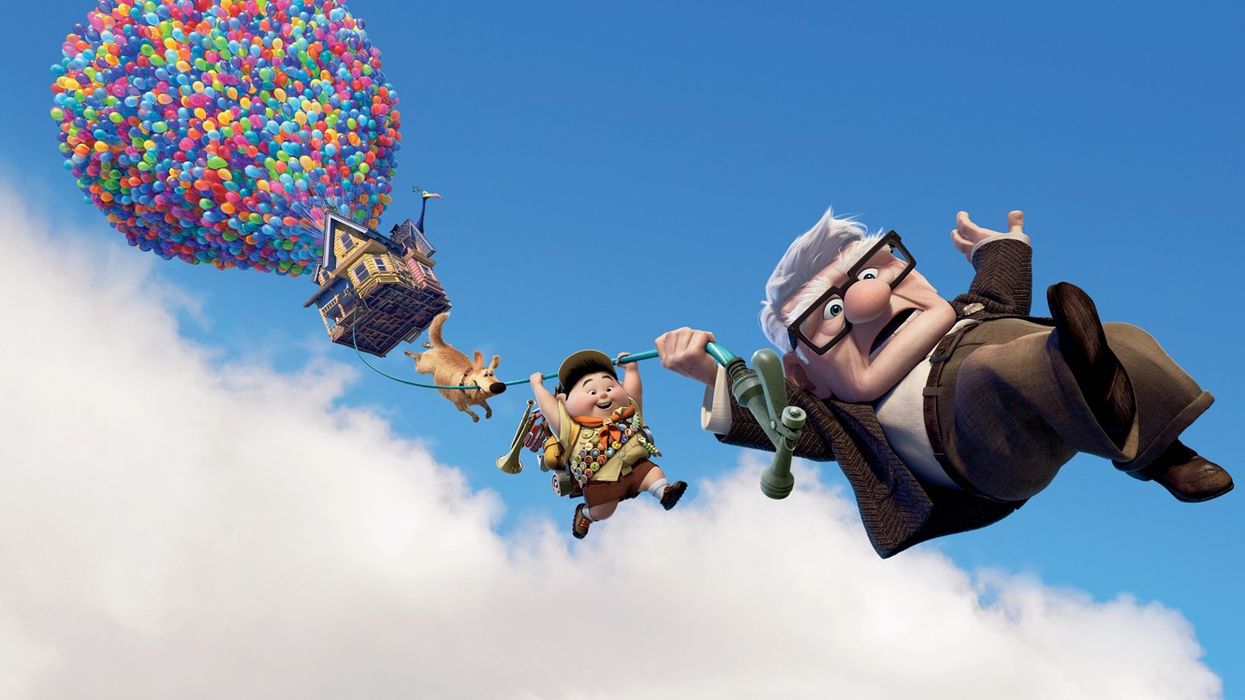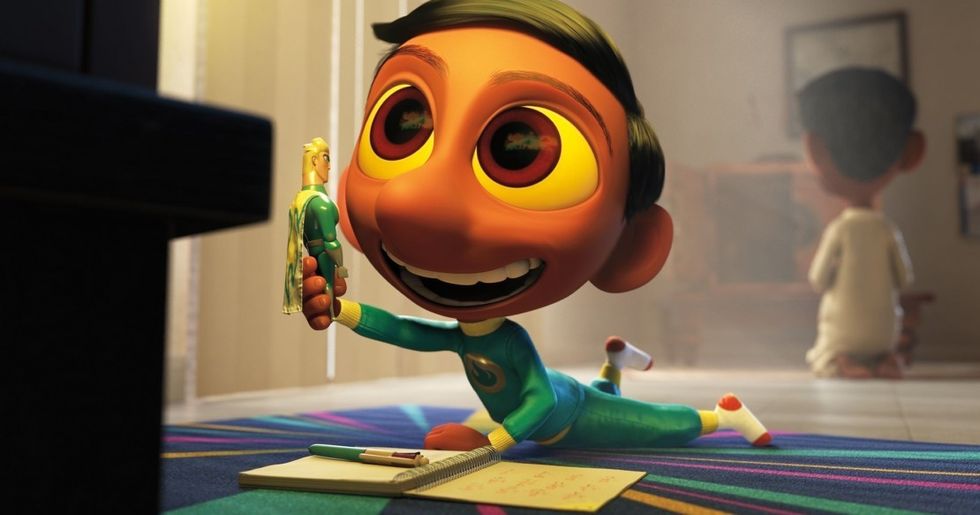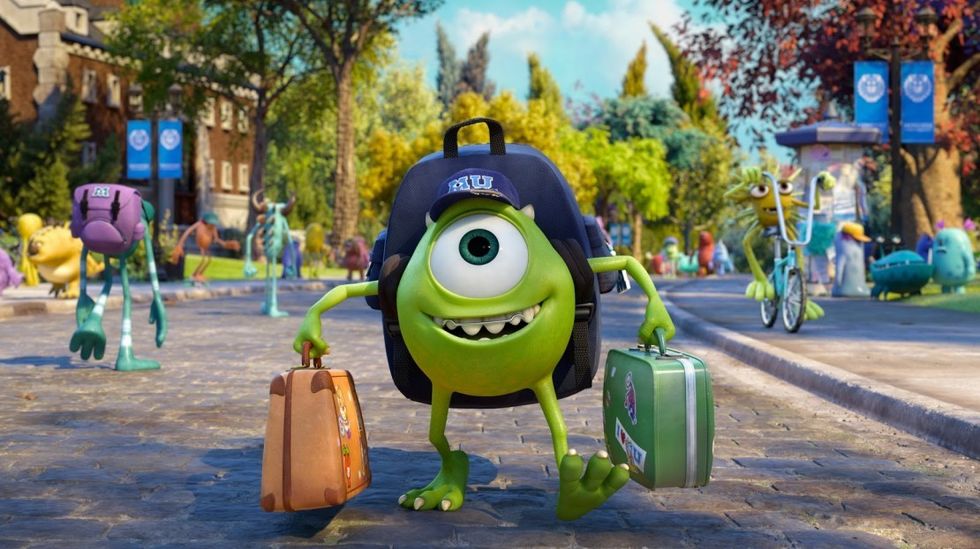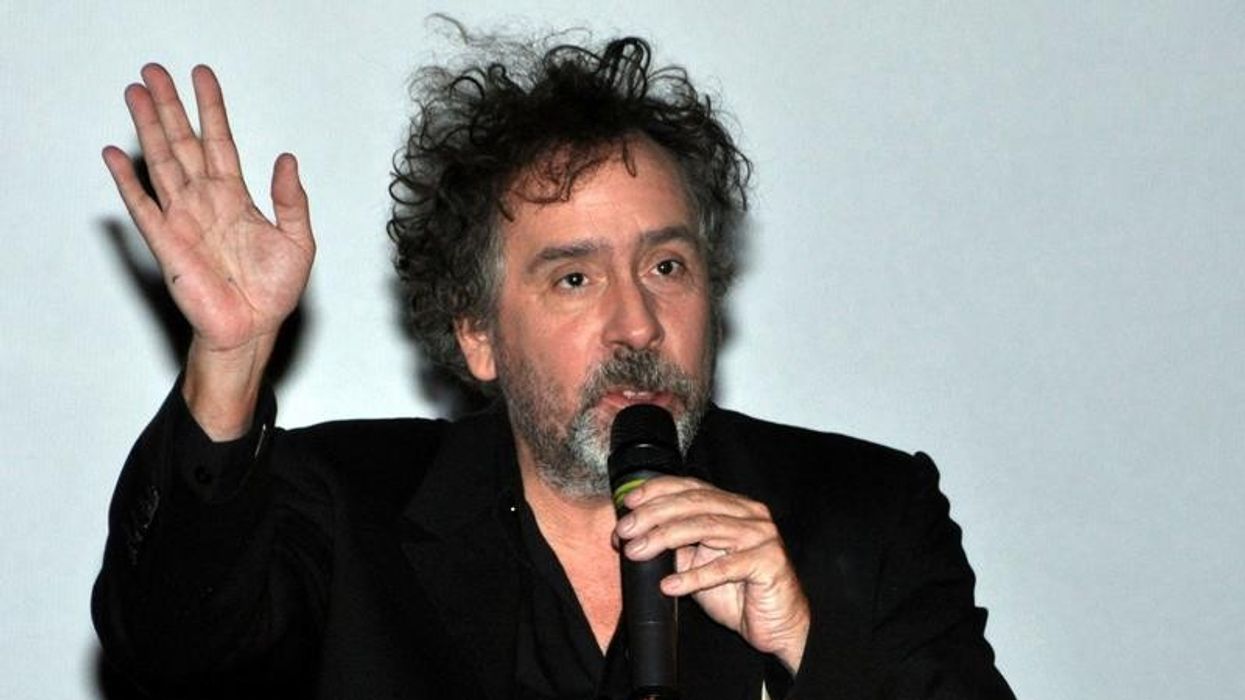5 Secrets to Pixar's Storytelling
Here's what we learned from the first chapter of Pixar's free storytelling workshop.

As we recently announced, Pixar's latest partnership with Khan Academy explores "The Art of Storytelling" through six lessons. The animation house has partnered with Khan in the past, with numerous free tutorials on animation craft. This is the first time, however, that Pixar is opening up about its greatest contribution to the filmmaking universe: story.
In addition to employing some of the finest and most creative writers in the industry, Pixar has a unique process when it comes to storytelling. Each film spends at least a year in the research and development phase, where writers are encouraged to experiment—and fail.
"We Are All Storytellers," the first lesson in the new Khan series, was released last week. We checked it out and compiled the most pertinent lessons. If you intend to try this lesson yourself, be forewarned: one of the exercises is to choose your top three desert island films, so set aside some serious soul-searching time.
1. Write about feelings you know
Acclaimed Pixar director Pete Docter (Inside Out, Up, Toy Story), introduced the lesson with an explanation of the age-old adage "write what you know." If this seems basic, remember: it's important to have a firm grasp on your building blocks. Docter reminded us that writing what you know isn't about events; it's about feelings.
Effective storytelling is about taking universal sentiment and conveying it in a unique situation. An event in your life "probably made you feel some particular way," Docter said, "and what you're trying to do, when you tell a story, is to get the audience to have that same feeling." It's easy to imagine these words in Pixar's mission statement.
Effective storytelling is about taking universal sentiment and conveying it in a unique situation.
Even history's most fantastical films can be boiled down to relatable human emotion. Pan's Labyrinth is, at its core, the story of a scared little girl. The Wizard of Oz is about teamwork and finding the good in people. E.T. is basically a buddy film. And that's why they work; you can take your audience anywhere within the limits of your imagination. As long as there's something relatable in the experience, they will follow.

2. Brilliant ideas come from everyday places
The next video introduced a number of Pixar "storytellers"—a mix of storyboard artists, directors, and writers.
In an effective effort to bridge the gap between teacher and student, these storytellers discussed the very relatable places from which their ideas come. Sanjay Patel (Sanjay's Super Team) brought up an especially resonant point. "Growing up, I felt like I had no ideas, like I was just the most unoriginal," he said. "I always felt like artists have to have endless amounts of ideas, and I felt I had zero."
We've all been there. But the beauty of writing what you know, as narrator Valerie Lapointe encouraged, is that "no two people will experience life the same [way], so no two people will tell a story the same way."
Think to your saddest moments. Your most joyous experiences. Times when you learned something. Times when you had an epiphany. Why did you feel that way? And how can you make others feel the same?
3. Use "what if" statements
What if there's life out there in the universe? What if a rat wanted to cook haute cuisine? What if our toys could come alive? At some point, all of your favorite films started as a simple notion. (We'd love to have been in those spitball meetings at Pixar.)
In a chapter titled "What if...," the storytellers encouraged letting yourself wonder. "[A 'what if' question] really shuts down the logic part of your brain, and it lets you engage in the dream part," Patel said. "It opens up the doors to imagination."
"Shut down the logic part of your brain and engage in the dream part."
This concept serves to rid you of the minutia of production. Of course, that's easy to say at Pixar, where they have unlimited resources and budget. But suspend your disbelief for a second—if you intend to fund and direct your own script, of course it's wise to "budget in the writing."
But you cannot be creative if you never let yourself dream. There is negativity to the thought "I can't afford that" that can depress a brainstorming session into the ground. So take off your independent producer cap and list out your wildest "what if's." At the end, you can always go back and reject high-cost ideas. But in the process, you might unlock a door and stumble upon something truly worthwhile.

4. A good story is emotional
In the true spirit of Pixar, this lesson reminds us that nothing is easy except dreaming. So once you've done that, it's time to roll up your sleeves. Throughout the lesson, the point is often revisited: building a good story from a good idea means chipping and shaping and reworking your script until it shines.
"Get rid of your eraser," Patel said. "If you're messing up, at least you're sure that you're actually making progress."
Domee Shi, a story artist, recommended a great starting point. "It's okay that your idea isn't perfect right out of the gate," Shi said. "It's just about identifying if there's something there emotionally that is drawing you to it, and if there is, then there's something there that you can keep working on and changing." But, she added, "always remembering what was that initial feeling that drew you to that idea."
"Get rid of your eraser."
It took roughly four years to develop the story for Inside Out— and they worked on it full time. So don't feel bad if you're not churning out gems daily.
5. Start with either world or character
World: an environment or set of rules. Character: the subject you follow. Your story needs both, but you can start with either.
People work differently. Patel mentioned Star Wars as a great example of starting with a concept of a world. "[It] has this great 'what if' question, which is: What if there was a band of rebels that were trying to be the guardians of the human spirit, in a great war with a non-feeling technology?" Though, of course, we don't know exactly what Lucas was thinking, it's pretty easy to imagine a stage where characters were created to fit the world.
For Shi, on the other hand, character always comes first. "For example, a blind person forgetting his pants and going to work will have a completely different story than a seeing-eyed person forgetting his pants and going to work," she said. "Two characters will have completely different stories, but all of the objects and the settings are completely the same."
It doesn't matter which side you land on; the idea is to find a substantive entry point into your story. What inspires you to keep asking questions? Answer that, and you'll be well on your way.
Khan Academy will be releasing the next five chapters of this lesson over the course of the year. Check back for further coverage.











